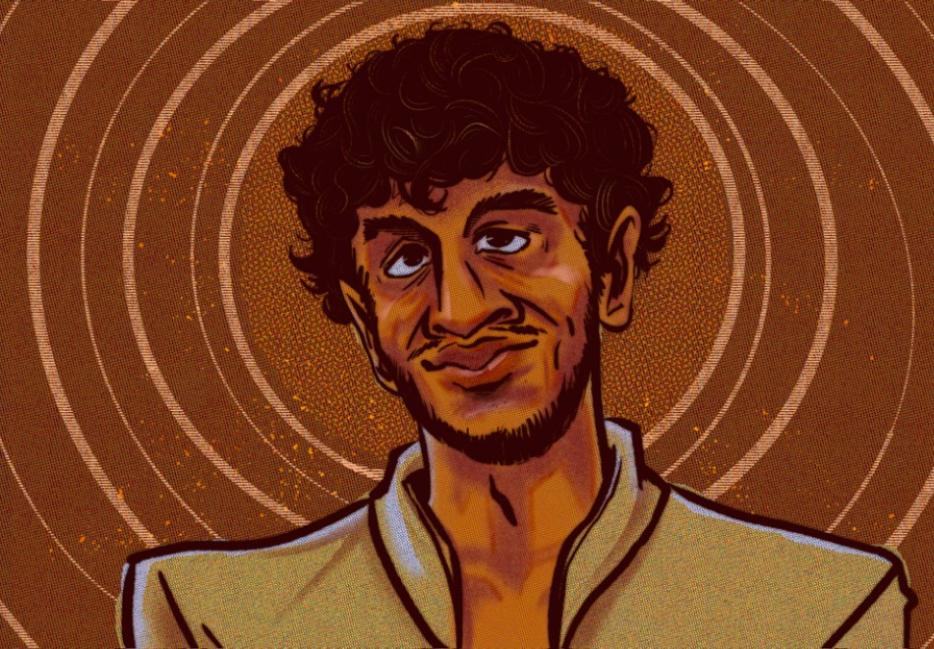Welcome to Wayward Watching, a column on the seen and unseen in film.
Halfway through Sanjay Kak’s 2007 documentary Jashn-e-Azadi (How We Celebrate Freedom), he runs into a retired school teacher living in a village in the Indian-administered region of Kashmir. You’ll never forget the old man’s mellow voice and steady gaze because he betrays no anxiety while speaking of the dead. He rattles off the names of two children killed in the “Indian army blasts” nearby, then the names of three brothers who became gun-wielding militant fighters during a wave of insurgency and were later murdered, one after another. After a while, the old man starts tallying the body count on his fingers. “Forty-two,” he says, “I may have missed a few.” Kak asks him when he started keeping count. “Since 1989,” he replies, “ever since the militancy began.” Forty-two killed in 15 years—and that’s just one village.
In Srinagar, the summer capital city, Kak follows a father on the way to his son’s grave. They are in a park that has been repurposed into a burial ground and renamed the martyrs’ graveyard. The father has trouble locating his son’s tombstone. “After a while, one forgets,” he tells Kak.
The German essayist Walter Benjamin once quoted Flaubert to the effect that his understanding of politics was bound by a single gesture: “the revolt.” Kak’s films strike me as political in a similar way. They are haunted by the ghosts of revolts past and ongoing; inevitable, perhaps, in a country where the twin tides of majoritarian sentiment and economic progress often gloss over forgotten lives and histories. Over seven decades, the right to forget has seemingly become intrinsic to Indian nationhood: what felt like a stoic refusal on the eve of independence in 1947— to be defined by the depredations of colonial rule and the cataclysmic partition of the subcontinent— hardened soon into an automatic reflex. After Narendra Modi was elected prime minister in 2014, the upsurge of Hindu supremacy and the rapid erosion of democratic norms can make the years prior seem relatively utopian. But that older idea of freedom, too, was predicated on spells of repression, most notably in Jammu and Kashmir, which was until recently India’s only Muslim-majority state, and where the military crackdown has been brutal and absolute.
Intifada is Kak’s word for the clarion call of self-determination that has echoed in Kashmir since 1989, when “old memories of oppression sought out fresh winds of struggle from across the mountains—from Pakistan, Afghanistan, even Palestine.” At the peak of the insurgency, more than thirty thousand armed militants were estimated to be operating inside the state. Last year, a Kashmir police official claimed that the number of active militants in the region was fewer than 200, yet half a million Indian troops still occupy the valley. Kak relates more startling figures—sixty thousand killed between 1989 and 2007, another ten thousand missing—but they seem only partially important to his story. The film lingers because of the cumulative power of its images; the delicacy with which suffering is conveyed without overstraining for the truth. In almost every transition shot, glimpses of the wintry landscape are impaired by a passing army truck or, sometimes, a pair of barbed wires. A soldier stands at gunpoint in the middle of a busy street but appears clueless about what he is supposed to see. A schoolgirl speaks of the time soldiers shot a man outside her house in cold blood and wouldn’t let anyone help for hours. Years after his brother’s murder, a cop recalls fainting at the sight of the body and the trauma of receiving the news while out on duty.
Each time I watch Jashn-e-Azadi, I marvel anew at how the documentary inhabits a collective point of view, despite the ways it could have ended up being a personal story. Kak’s parents are Kashmiri Pandits, a minority Hindu community with a different memory of what happened in the valley after 1989. At least one hundred Pandits were killed in the early years of the uprising, and several thousand families fled their homes in the state. Kak grew up away from Kashmir—his father worked in the Indian Army—but he visited relatives every year through the seventies and eighties. In 2003, he went back after fourteen years, apparently because he had promised his daughter they’d go together. The film could very well have been a more intimate saga about a father and daughter travelling back to a lost homeland, or the story of a man coming to terms with the exodus of his community.
What we witness instead is a group portrait of a population withering away under military surveillance at the turn of the millennium. Shops are shuttered in Srinagar on the eve of Indian Independence Day; the city’s lanes and alleys are ominously silent. Except for a few desolate-looking policemen humming the national anthem in a market square, you can’t spot a soul walking for miles. Elsewhere, civil rights activists go knocking on doors to record the names of the missing and the dead. Survivors queue up all day long outside psychiatry clinics. Schoolkids are frisked before they can enter a playground. Inside an army base, a regiment leader hands out a few radios to locals and promises desktop computers for the children as long as “you keep talking to us.” Amid reappraisals of prior casualties across the state, no one seems to remember the Pandits and their long exile. The film imaginatively evokes their absence, not through images but with sound. At one point, we hear Kak talking to the Pandit poet Pyare “Hatash” on the phone and asking him to read something aloud. Moments after the poet starts reading from his work—“so brothers, our home is lost…”—the line gets disconnected.
Fifteen years ago, Kak could afford to let a missed connection evoke something ineffable, but the formal choices that made Jashn-e-Azadi a classic—the expository restraint, the cinéma-vérité silences—would perhaps not be feasible today. There is the strident toxicity of Hindu nationalism that renders artistic intricacies vulnerable to manipulation. Besides, a film about contemporary Kashmir would have to reckon with a longer timeline of defining moments. Kashmiri journalists and photographers are routinely harassed and stopped in Indian airports from travelling abroad. Since 2010, the Indian army has been using shotgun pellets to disperse protests in Kashmir, despite countless instances of children being blinded by these pellets. One long August night three years ago, Modi revoked the autonomous statehood of Jammu and Kashmir, imprisoned almost every local political leader, and imposed a crippling lockdown with an internet blackout that partially persists to this day. Just this spring, a paranoid fictional drama called The Kashmir Files claimed that the targeted killings of Pandits were tantamount to a “genocide” and that a cabal of “leftist” college students, journalists and activists had colluded to suppress the truth over decades. Reports of Islamophobic chants and hate speeches at theatre screenings around the country didn’t deter Modi from recommending the movie. The remaining Pandits in the valley complained that the film’s diabolical distortion of history made them feel unsafe. By June, sectarian murders had spiked, and many of them were moving out of Kashmir again.






